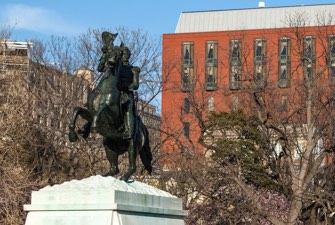 Jang v. Bos. Sci. Corp., (Fed. Cir. Sep. 29, 2017) (Before Prost, C.J., O’Malley, and Chen, J.) (Opinion for the court, Chen, J.).
Jang v. Bos. Sci. Corp., (Fed. Cir. Sep. 29, 2017) (Before Prost, C.J., O’Malley, and Chen, J.) (Opinion for the court, Chen, J.).
In a 2002 agreement, Dr. Jang’s ‘021 Patent was assigned to Boston Scientific Corporation (“BSC”). Dr. Jang was to collect royalties if BSC developed and sold a coronary stent covered by his patented technology. In 2005, Dr. Jang filed a lawsuit alleging that BSC owed him royalties associated with sales of BCS’s Express stent. BSC requested an ex parte reexamination of the asserted claims, which the PTO cancelled as unpatentable. The district court denied BSC’s motion for summary judgment, holding that Dr. Jang was not barred from collecting royalties for past sales. A trial was held to decide whether the Express stent was covered by, or infringed, the asserted claims of the ‘021 Patent.
The jury found no literal infringement but found infringement under the doctrine of equivalents. The district court then conducted an evidentiary hearing and concluded that Dr. Jang failed to prove that his doctrine of equivalents theory did not ensnare the prior art. The court overturned the jury’s verdict of infringement and denied Dr. Jang’s Motions for Judgment as a Matter of Law and for a New Trial. The Federal Circuit affirmed.
First, substantial evidence supported the jury’s verdict of no literal infringement. The claimed connecting strut columns did not expand when the stent expanded, and the Express stent’s strut columns did. The claimed elements were joined in a peak-to-peak configuration with a non-parallel intermediate section, while the Express stent’s elements were joined in a peak-to-valley configuration with a parallel intermediate section. Thus, a reasonable jury could find that the Express stent did not literally meet all the limitations in the asserted claims.
Second, Dr. Jang asserted infringement under the doctrine of equivalents, which cannot encompass or “ensnare” the prior art. As part of this analysis, the proponent of equivalence, in this case Dr. Jang, proposes a hypothetical claim sufficiently broad to literally encompass the accused device while remaining patentable over the prior art. The hypothetical claim may not add narrowing limitations to the asserted claim. The burden to propose a proper hypothetical claim, and define the range of equivalents, is exclusively on the advocating party, usually the patentee, and cannot be shifted onto the court.
The two hypothetical claims presented by Dr. Jang were improper. First, while broader than the asserted claim, hypothetical claim 3 was also narrower. Second, the mere addition of “at least” in a claim that contains “comprising” did not broaden hypothetical claim 5. Contrary to Dr. Jang’s assertion, the court was not required to proceed with the ensnarement analysis when no acceptable claim was presented.
Finally, BSC did not waive the ensnarement defense. Sufficient notice of the defense was present when BSC raised it in a pretrial motion and the court notified the parties that it would hold a post-trial hearing contingent on a jury verdict of infringement under the doctrine of equivalents. Finally, because it dealt with hypothetical claims, the ensnarement analysis had no bearing on the validity of the actual asserted claims.
Crafting a proper hypothetical claim is a prerequisite to whether a theory of infringement under the doctrine of equivalents would also ensnare the prior art. The burden to present a proper hypothetical claim cannot be shifted, and a hypothetical claim cannot be broader for the alleged range of equivalents, and not otherwise narrower.
[Troutman-Ad]
[Troutman-About]

![[IPWatchdog Logo]](https://ipwatchdog.com/wp-content/themes/IPWatchdog%20-%202023/assets/images/temp/logo-small@2x.png)


![[Advertisement]](https://ipwatchdog.com/wp-content/uploads/2024/04/Artificial-Intelligence-2024-REPLAY-sidebar-700x500-corrected.jpg)
![[Advertisement]](https://ipwatchdog.com/wp-content/uploads/2024/04/UnitedLex-May-2-2024-sidebar-700x500-1.jpg)
![[Advertisement]](https://ipwatchdog.com/wp-content/uploads/2024/04/Patent-Litigation-Masters-2024-sidebar-700x500-1.jpg)

![[Advertisement]](https://ipwatchdog.com/wp-content/uploads/2021/12/WEBINAR-336-x-280-px.png)
![[Advertisement]](https://ipwatchdog.com/wp-content/uploads/2021/12/2021-Patent-Practice-on-Demand-recorded-Feb-2021-336-x-280.jpg)
![[Advertisement]](https://ipwatchdog.com/wp-content/uploads/2021/12/Ad-4-The-Invent-Patent-System™.png)






Join the Discussion
No comments yet.